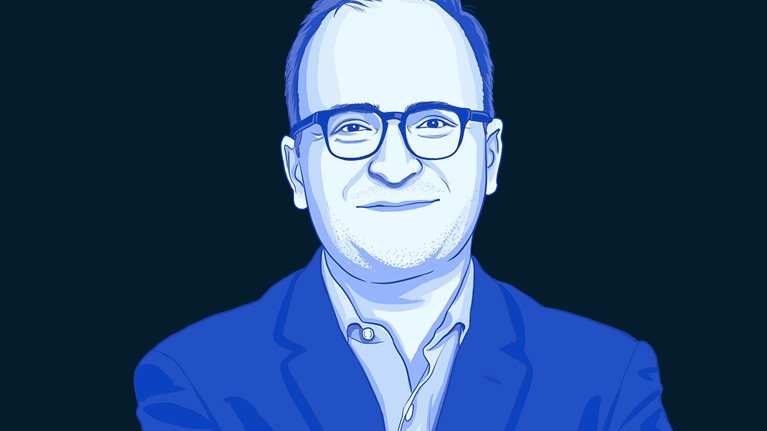When founders decide it’s time to move on after nurturing their start-up into a successful enterprise, years of hard work can quickly come undone if they don’t plan the leadership transition well. Steve Melhuish, cofounder and former CEO of PropertyGuru, spoke to McKinsey’s Tomas Laboutka about the painstaking transition process he and his cofounder put in place to ensure the success of the company and its new CEO.
Tomas Laboutka: There are numerous success stories of start-ups handling leadership succession well, but also countless examples of failures. When did you know it was the right moment to bring in a new CEO for PropertyGuru?
Steve Melhuish: It was a personal decision. My cofounder, Jani, and I bootstrapped the company, building it from scratch into a regional market leader in ten years. It was a grueling and relentless time, as we worked seven days a week, without vacation and with little salary, for most of that period.
As my twin children approached their third birthday, I realized I’d missed so much and was scared that I would miss their formative years unless I took action. So I decided my priorities needed to change and promised my wife I’d hand over operations of the business by the time the kids were five years old.
I discussed it with Jani, and he was reaching a similar conclusion, having recently had a son. We knew it would be a complex, challenging, and lengthy transformation and transition process, so we set the wheels in motion early.
Tomas Laboutka: How did you communicate your intention to your investors, partners, and employees?
Steve Melhuish: We presented our proposal to the board in 2014 by explaining that every leader needs to plan for an eventual succession. The shareholders at that stage were understandably concerned, since they’d invested in a founder-led business for two years and worked alongside us.
In addition, while we already had a presence in four countries at that time, 96 percent of our revenues were generated in Singapore, primarily by Singapore real-estate agents. And decision making within the company was still largely concentrated with me and Jani, so we lacked depth in our regional leadership and middle management.
So we agreed to a three-step plan focused on revenue diversification and professionalizing the organization before identifying and transitioning to a new CEO. We made a commitment to the board to execute this plan over the subsequent three years.
To support revenue diversification, we heavily increased product, team, and marketing investment in Indonesia, Malaysia, and Thailand. We also added a fifth country to our portfolio by acquiring Vietnam’s market leader. And we acquired two companies focused on serving real-estate developers, to enhance our value proposition to these valuable clients.
We hired the company’s first CFO, CMO, CTO, and CHRO and invested in new IT systems and processes underpinning these functions. Additionally, we invested in training and development to help increase our middle-management capability.
Nine months after starting this transition process, we successfully completed PropertyGuru’s largest round of funding. We made it clear to the prospective investors right at the outset that we were in the middle of a transition that would hand over control of the company to a new CEO in roughly 18 months. But at that stage, we didn’t yet communicate our succession plan to employees, since we wanted the whole team laser-focused on our business priorities: diversification and organizational development.
Tomas Laboutka: Finding a replacement for cofounders who helmed the company for a decade couldn’t have been easy. How did you design the CEO selection process?
Steve Melhuish: Bringing a new CEO into a ten-year-old, founder-led business is clearly a high-risk proposition for the founders, company, and shareholders, all who worry whether the new CEO will fit in and enhance, or damage, the company. It’s also high risk for the incoming CEO, who worries whether the existing company culture is a good fit for him or her and whether the founders will actually step back to let him or her do the job unencumbered.
The process we designed was aimed at not only identifying the best CEO but also minimizing the risk of “organ rejection.” The candidate profile we developed placed a heavy emphasis on culture, values, and talent development, as well as experience in building fast-growing businesses. We aligned with and received support from our board members and then hired an executive search firm we’d had success with in the past placing some of PropertyGuru’s CXOs.
We were surprised at the quality of the shortlist and how quickly it came together. Many of the candidates were well-known senior executives leading large Asia Pacific or Southeast Asia teams for Fortune 100 tech firms. We were taken aback that talent of this caliber would want to join a much smaller, earlier-stage private tech firm.
However, it became clear during the interview process that some candidates were frustrated by bureaucracy, politics, slow decision making, low Asia investment, and the lack of significant “face time” with stakeholder management back at headquarters. Given their lack of decision-making authority within their large organizations, candidates were attracted by the prospect of owning the full P&L, functions team, and strategy in a smaller company.
In the final stage of the hiring process, the top three candidates presented their growth plans for PropertyGuru during a two-hour interview with Jani, me, and the board. The CXOs were involved and conducted background checks, including via back channels with team members, customers, and suppliers. We ultimately selected Hari Krishnan, who had successfully built and was leading LinkedIn’s Asia Pacific business. It turned out to be a great decision.

Shaper interviews
Tomas Laboutka: How did you ensure your new CEO fit within the culture of PropertyGuru? How did you prevent “organ rejection”?
Steve Melhuish: We implemented a three-step process to reduce this risk, which included coaching, a pre-handover soft landing, and post-handover founder support. We created a new chief business officer role, which owned all commercial aspects of the company, for Hari for the first nine months. Hari, Jani, and I also met weekly, and through this process we were able to accelerate learning and guide Hari on any historical or personnel issues.
This enabled Hari to accelerate his onboarding, deliver some wins, build credibility internally and with the board, and determine whether PropertyGuru was a good fit for him. At the same time, Jani, the board, and I had the opportunity to monitor progress against expectations, assess the cultural fit, and minimize risk before handing over the keys to the company.
We also hired an executive coach for the first four months of Hari’s tenure with PropertyGuru. This involved individual coaching for me, Jani, and Hari to help us manage any specific concerns and expectations. We later moved to group coaching sessions to bring out and address any bigger issues. It was a highly uncomfortable but highly valuable process.
After nine months, I announced my handover of the CEO role to Hari via a live broadcast to all PropertyGuru offices, followed up by an email and live town halls with all three of us in each of the five countries where the company operates.
We also reassured the team that Jani and I remained committed to the company and would continue working within the organization, as well as on the board of directors and as shareholders.
Over the next 12 months, I moved to the back seat, handing over responsibilities and decision making as Hari, Jani, and I continued to meet weekly to review progress and issues. By January 2018, I had handed over all operations and was able to shift into a half-time role working on strategy, M&A, and some key client relationships.
The transition process took three years and was incredibly smooth, thanks to a well-managed and phased approach, strong board support, as well as empathy and openness between Hari, Jani, and me.
Tomas Laboutka: The leadership transition seems to have worked out quite well. You recently reported strong growth figures, and PropertyGuru is profitable. What if the transition hadn’t worked out? Did you have a contingency plan?
Steve Melhuish: Business momentum has continued throughout the process, and we recently reported strong annual results, with 24 percent revenue growth, 64 percent EBITDA growth, and an increased market leadership position across the five countries where PropertyGuru operates. The succession was a success. Hari and the team have done a great job building on the foundation created by Jani and me over the first ten years.
As with all plans, though, success is never guaranteed. Our contingency plan in case of failure was for Jani and me to step back into the business. Underpinning this possible scenario was the phased process over a three-year period, which included working full-time alongside the new CEO for 15 months after the formal announcement. After the CEO transition announcement, we remained fully engaged in the business. We were involved in leadership meetings and social activities with the CXOs, engaged with the wider team, held weekly meetings with the new CEO, and maintained full visibility of key priorities and challenges. This minimized the risks and also enabled Jani and me to assume leadership again at short notice, if necessary.
Tomas Laboutka: Looking back, what was the most difficult aspect of the leadership transition and how did you resolve it?
Steve Melhuish: I’m grateful the transition process went smoothly, and the results speak for themselves. The most challenging aspect of the leadership transition was actually on a personal level. Despite initiating and driving the succession plan for more than two years beforehand, I struggled with turning over the reins, and it took me close to a year after the announcement to adjust to this new reality. I realized it was hard to just switch off and step back after ten intense years of building a business. I also discovered that I had an ego. I enjoyed leading the company, calling the shots, and being interviewed by the media. I missed social interactions with the team as well.
I struggled emotionally, had a crisis of confidence, and suffered from lack of purpose. It was during this time that my wife remarked, “You’ve achieved all you set out to do, but you are now more miserable than I’ve ever seen you. Do you want the CEO role back?” My answer to her was an emphatic “no.” My priorities had shifted, and I was determined to spend more time with my family, while thinking about “what next?” This started the process of my transitioning into a more positive mode.
Thankfully, I had amazing support from my wife and my Entrepreneurs’ Organization colleagues. I also received coaching from some fellow founders who’d been through similar experiences when exiting their start-ups.
I began meditating, exercising more, going on vacations, reengaging in the regional start-up scene, and investing time and money in the climate and social-impact space. Two years later, I’m having fun. My last ten angel investments have all been in the sustainability space, and I’m working with some inspiring start-ups, founders, investors, and organizations.


